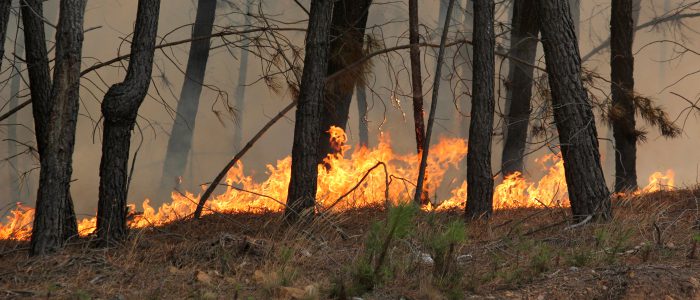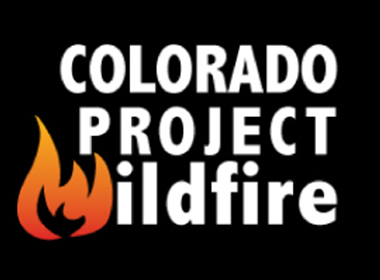
Safer at Home Allows Time for Wildfire Season Preparation for More than Half of State’s Residents Living in WUI
May 2 marks 7th annual Wildfire Community Preparedness Day and kickoff to Wildfire Awareness Month
While COVID-19 has changed facets of Coloradans’ personal and professional lives and required residents everywhere to stay at home, for more than half of the state’s population who live in a wildfire prone area, the stay at home and safer at home mandates present an opportunity to prepare for the upcoming wildfire season.
With Wildfire Preparedness Day on Saturday, May 2 and Wildfire Awareness Month in May, wildfire, insurance and REALTOR® professionals are encouraging the nearly 3 million Colorado residents living in the wildland-urban interface (WUI) to prepare their homes and communities for wildfire in the weeks ahead.

“Every homeowner should be aware of their wildfire risk and the associated responsibility to reduce that risk, not only to protect their property, but also to improve the safety of first responders,” said Colorado State Forest Service (CSFS) Wildfire Mitigation Specialist Daniel Beveridge. “There are numerous examples from the past few seasons showing that proactive wildfire mitigation efforts are effective and now is a perfect time for people across the state to take action.”
The current outlook calls for average wildfire potential into mid-summer with an early onset to fire activity in the southern portion of the state, and the southwest corner in particular. In an average year, Colorado would have 4,472 wildfires burn more than 160,400 acres. However, the impact on people and communities across the state would be further magnified during a wildfire season with COVID-19 factors in play through air quality issues, evacuation challenges and access to wildfire resources, according to an early April update from the Colorado Division of Fire Prevention and Control.
Although COVID-19 related restrictions prevent residents from conducting group mitigation activities, wildfire officials are encouraging individual homeowners to take advantage of this extra time at home to engage in a wide range of low-cost mitigation steps proven to protect homes and land and help reduce damage to structures and communities.
“Since wildfire is not affected by viruses like the human population, it is all the more important this fire season to prepare ourselves and our homes for its impact, no matter where in the state we live,” said CSFS’s Beveridge.
From completing home inventories, including photographs and video, to cleaning gutters and rooftops, to trimming backyard shrubs and trees and removing flammable materials from the perimeter of the home, there are a wide range of easy steps that homeowners can complete as coronavirus restrictions keep people at home. Reviewing insurance policy details and updating coverage are also key steps in the process along with creating and reviewing evacuation plans and emergency toolkits.

“During these uncertain times when all of us are worried about protecting our personal finances, it’s important we take steps to prepare our properties and insurance policies for wildfire season,” said Rocky Mountain Insurance Association (RMIA) Executive Director Carole Walker. “Using this time at home to create an inventory of personal belongings and checking in with your insurance professional to review coverage are projects we usually procrastinate that will help homeowners be financially prepared for wildfire and natural disasters.”
Based on recommended fire-mitigation activities from the National Fire Protection Association (NFPA), the Colorado State Forest Service (CSFS) advises homeowners complete the following activities at home while practicing social distancing.
Top 10 Wildfire Season Preparation Activities:
- Rake and remove pine needles and dry leaves 5 feet from the home as well as under decks, porches, sheds and play structures.
- Remove leaves and needles from roofs and gutters.
- Sweep porches and decks clear of any burnable plant material.
- Move firewood piles at least 30 feet from the house, preferably uphill.
- Transfer items under decks or porches to a storage area.
- Cover any exposed eave or attic vents with 1/8-inch metal mesh screening.
- Ensure home address signs are clearly visible from the street.
- Contact the local Office of Emergency Management to register for emergency notifications and encourage your friends, family and neighbors to do the same.
- Confirm at least one alternate path out of your neighborhood other than the one most commonly used and be prepared for potential evacuation requiring the alternative route.
- Create an inventory of valuables in your home including written summaries, photography and video. Source: CSFS and NFPA
Wildfire experts and key stakeholder organizations and professionals across the state offer a diverse range of resources and recommendations to help Colorado citizens prepare for and respond to wildfires, including:
- The National Fire Protection Association (NFPA), which founded the National Wildfire Preparedness Day in 2014, offers comprehensive research and a wide range of downloadable fact sheets, brochures, checklists and visuals to help residents understand wildfire threats and the steps needed to help protect homes. For more information and access to NFPA tools, visit: https://www.nfpa.org/
In addition, NFPA will host two, free one-hour webinars offering homeowners guidance on how to prepare their homes to withstand a wildfire and how to prepare their finances to recover from a loss. The webinars will be held:
- May 6, 11 a.m. MDT. Click here to register.
- May 20, 11 a.m. MDT. Click here to register.
- The Rocky Mountain Insurance Association (RMIA) provides a range of wildfire specific downloadable tools, templates and education for homeowners, including home inventory checklists, wildfire prevention tips and evacuation planning tools via its website: http://www.rmiia.org/index.asp.
- The Colorado State Forest Service hosts the Colorado Wildfire Risk Assessment Portal (CO-WRAP), an online mapping tool that provides access to statewide wildfire risk assessment information: www.coloradowildfirerisk.com
- Colorado Association of REALTORS® in cooperation with wildfire and insurance industry experts produced a consumer-focused Colorado Property and Insurance Wildfire Preparedness Guide featuring best practices in wildfire mitigation, defensible space, safety and insurance preparation for property owners, frequently asked questions and direct links to a wide range of local community resources for residents. The guide is available at ColoradoProjectWildfire.com.
Since launching Colorado Project Wildfire in 2015, REALTORS® across the state have joined forces with industry experts to host local wildfire education events for residents, share information and access to resources directly with homeowners.
“Although it’s easy to be distracted by the drastic changes that Coronavirus has brought us in the past two months, we can’t take our eyes off of the significant and potentially deadly threat that wildfires bring to our state each year,” said Ulrich Salzgeber, chairman of the Colorado Project Wildfire Taskforce for the Colorado Association of REALTORS®. “With more than 26,000 members living, working and supporting communities throughout our state, we will continue to be proactive in helping educate and support homeowners and residents living in these WUI areas about the steps they can take and the resources available to them to mitigate their properties and be prepared for the growing wildfire risk.”


